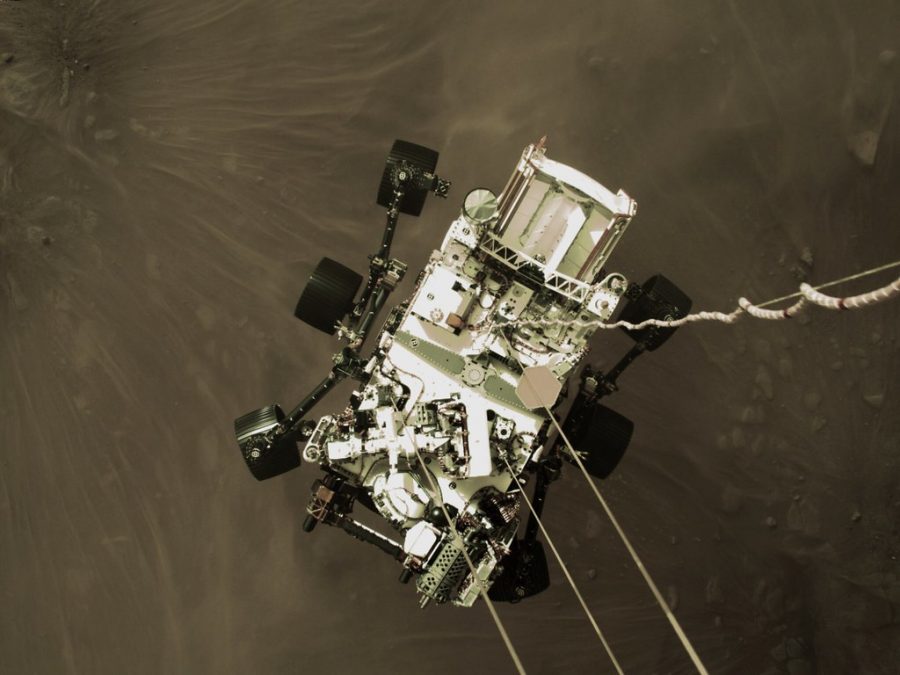Perseverance, NASA’s newest Mars rover, successfully lands after 6-month journey
March 26, 2021
After a 203-day journey since its launch on July 30, NASA’s largest and most advanced rover named Perseverance touched down on Mars on Feb. 18, making it the fifth rover to land on the Red Planet.
“This landing is one of those pivotal moments for NASA, the United States, and space exploration globally — when we know we are on the cusp of discovery and sharpening our pencils, so to speak, to rewrite the textbooks,” acting NASA Administrator Steve Jurczyk said in a press release.
“The Mars 2020 Perseverance mission embodies our nation’s spirit of persevering even in the most challenging of situations, inspiring, and advancing science and exploration. The mission itself personifies the human ideal of persevering toward the future and will help us prepare for human exploration of the Red Planet.”
The $2.7 billion rover made its landing last month in a crater scientists believe held water 3.8 billion years ago, only a few kilometers away from a fossilized river delta where Perseverance will inspect for possible signs of life, according to Science.
Perseverance is specifically designed to “hunt for signs of past microbial life” in order to determine if life has ever existed on the planet, according to BBC News. This rover is the first NASA mission to search directly for these “biosignatures” since NASA’s Viking program that was launched back in 1975, according to BBC News.
On Mars, the rover will collect both rock and soil samples and place them into special tubes. The tubes will be left on the surface of the planet and collected at a later time when they will be ready to return to Earth.
The rover will also study the geology of the planet and test out various strategies that will allow scientists to work on future projects, including the possibility of sending astronauts to Mars to “produce oxygen from CO2 in the atmosphere,” according to BBC News.
“We’re nestled right in a sweet spot, where you can see different features similar in many ways to features found by Spirit, Opportunity, and Curiosity at their landing sites,” Jim Bell of Arizona State University’s School of Earth and Space Exploration, said, according to NASA.
Not long after Perseverance had landed on Mars, the rover started capturing images and videos of its surroundings and analyzing the rocks that were close by. So far, scientists have already determined that many of the rocks are similar to volcanic rocks that are present on Earth. “Everything is going great so far,” a geochemist at the California Institute of Technology, Kenneth Farley, said, during the Lunar and Planetary Science Conference on March 16.







